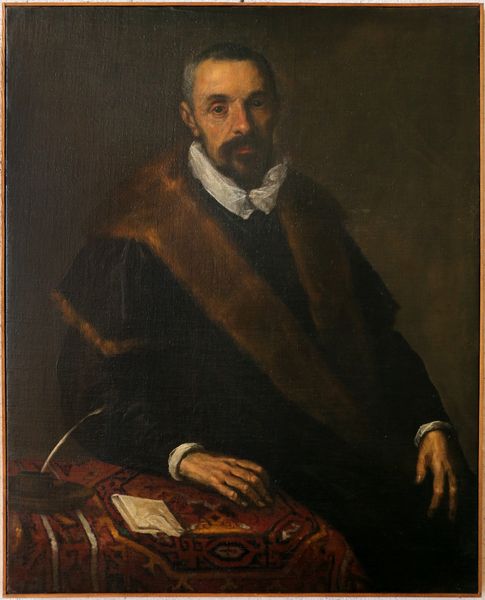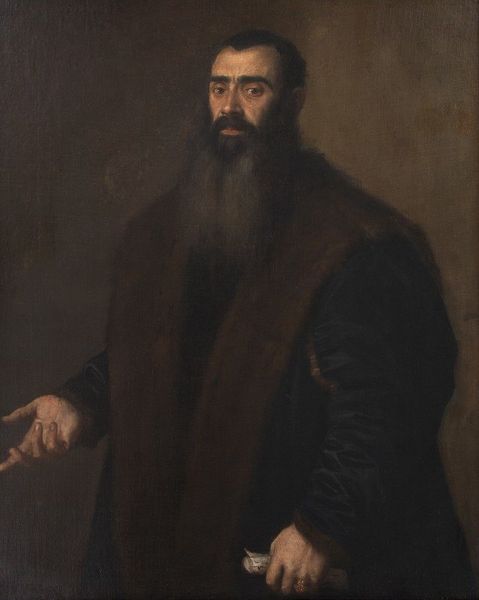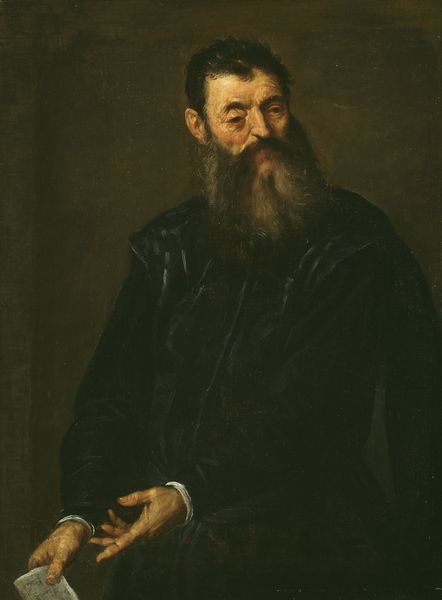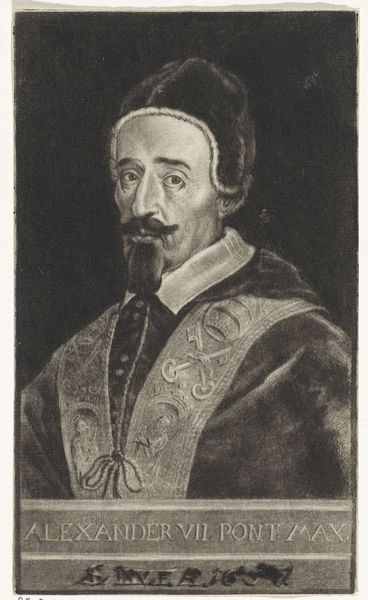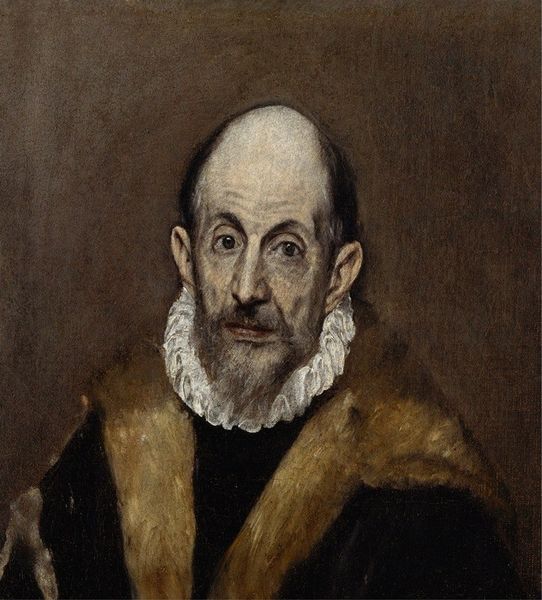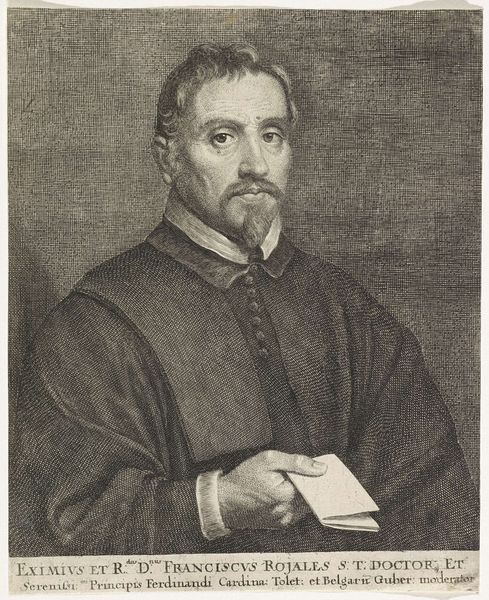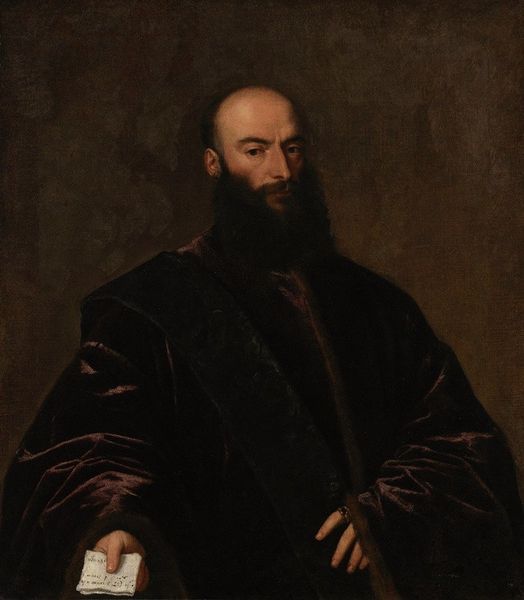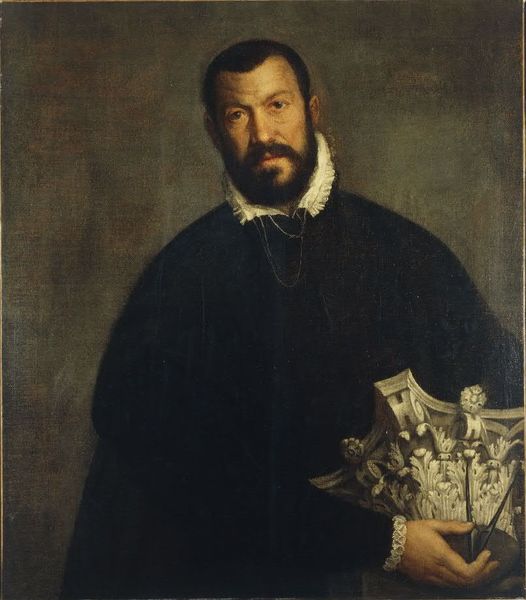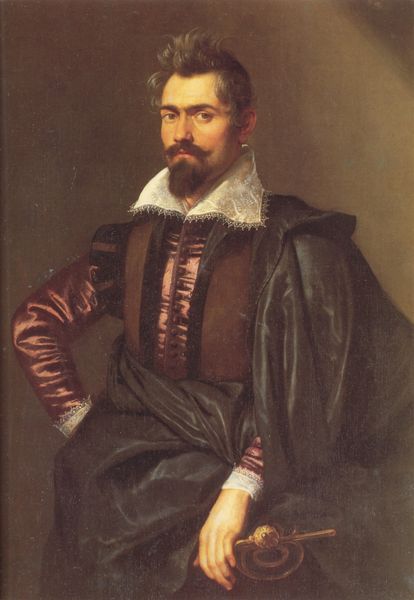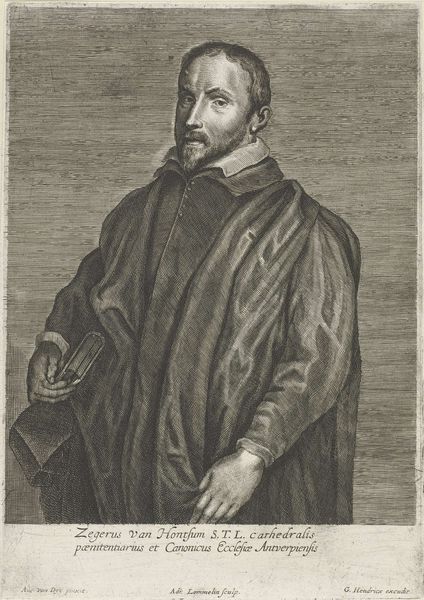
painting, oil-paint
#
portrait
#
figurative
#
portrait
#
painting
#
oil-paint
#
mannerism
#
figuration
#
history-painting
#
academic-art
Copyright: Public Domain: Artvee
Curator: Looking at El Greco's "Portrait of a Man," painted sometime between 1569 and 1575, the first thing that strikes me is the austere, almost somber atmosphere. Editor: Yes, there's a stillness here, an intensity achieved through a fairly restricted palette. I find myself drawn to the textures, though—the crispness of the white collar against the deep, velvety black of his cloak. Curator: Absolutely. El Greco masterfully contrasts light and shadow to sculpt the figure. Note the way the light catches the sharp planes of his face and the delicate rendering of the hands. This contrast heightens the emotional impact of the artwork, suggesting inner turmoil perhaps. Editor: I’m curious about the subject's identity, particularly how societal roles might constrain or define him. His clothing speaks volumes about his status, of course, but the tightly clasped hands might speak of suppressed agency during this period. Curator: Certainly. El Greco has captured something essential in this man's character through these small visual details. If you analyze the compositional balance, the subject's gaze seems to demand consideration and attention. Editor: I read that gaze somewhat differently. There's a vulnerability in his eyes, as if the artist has stripped away layers of societal pretense. Consider the weight of representing masculinity during a period of great religious and political tension in Europe. Perhaps it is these tensions which lend a weight and significance to this portrayal. Curator: It's in these very tensions—between the material and the emotional, the known and the unknown—that this portrait becomes compelling. Editor: El Greco offers a complex, perhaps subtly subversive, glimpse into the personhood and the experience of a man, living during an era rife with complexity. The use of symbolism is understated, but profoundly resonant nonetheless.
Comments
No comments
Be the first to comment and join the conversation on the ultimate creative platform.
